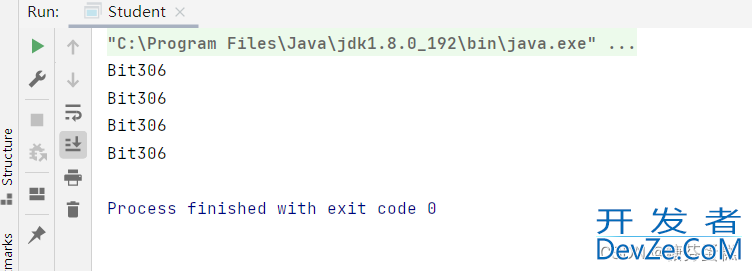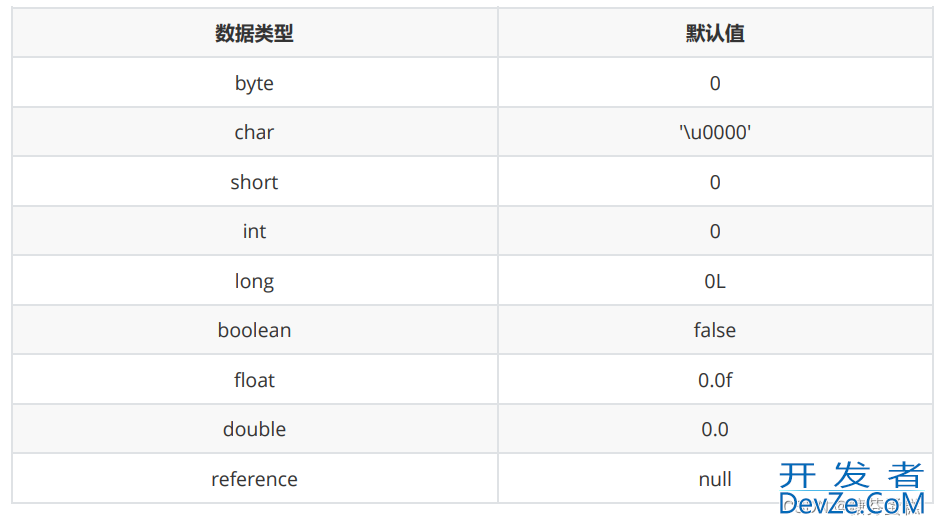深入了解Java中的static关键字
目录
- static修饰成员变量
- static修饰成员方法
- static成员变量初始化
static修饰成员变量
static修饰的成员变量,称为静态成员变量,静态成员变量最大的特性:不属于某个具体的对象,是所有对象所共 享的
public class Student{
public String name;
public String gender;
public int age;
public double score;
public static String classRoom = "Bit306";
Student(String name,String gender,int age,double score){
this.name=name;
this.gender=gender;
this.age=age;
this.score=score;
}
public static void main(String[] args) {
// 静态成员变量可以直接通过类名访问
System.out.println(Student.classRoom);
Student s1 = new Student("Li leilei", "男", 18,js 3.8);
Student s2 = new Student("Han MeiMei", "女", 19, 4.0);
android Student s3 = new Student("Jim", "男", 18, 2.6);
// 也可以通过对象访问:但是classRoom是三个对象共享的
System.out.println(s1.classRoom);
System.out.println(s2.classRoom);
System.out.println(s3.classRoom);
}
}

此时通过代码我们可以看到被static关键字修饰的成员属于某个具体的对象,是所有对象所共 享的
【静态成员变量特性】
- 不属于某个具体的对象,是类的属性,所有对象共享的,不存储在某个对象的空间中
- 既可以通过对象访问,也可以通过类名访问,但一般更推荐使用类名访问
- 类变量存储在方法区当中
- 生命周期伴随类的一生(即:随类的加载而创建,随类的卸载而销毁)
static修饰成员方法
一般类中的数据成员都设置为private,而成员方法设置为public,那static属性应该如何访问呢?
public class Student{
public String name;
public String gender;
public int age;
public double score;
private static String classRoom = "Bit306";
Student(String name,String gender,int age,double score){
this.name=name;
this.gender=gender;
this.age=age;
this.score=score;
}
}
class Textstuden编程客栈t{
public static void main(String[] args) {
// 静态成员变量可以直接通过类名访问
System.out.println(Student.classRoom);
Student s1 = new Student("Li leilei", "男", 18, 3.8);
Student s2 = new Student("Han MeiMei", "女", 19, 4.0);
Student s3 = new Student("Jim", "男", 18, 2.6);
// 也可以通过对象访问:但是classRoom是三个对象共享的
System.out.println(s1.classRoom);
System.out.println(s2.classRoom);
System.out.println(s3.classRoom);
}
}

此时我们会发现编译器报错
Java中,被static修饰的成员方法称为静态成员方法,是类的方法,不是某个对象所特有的。静态成员一般是通过 静态方法来访问的
public class Student {
public String name;
public String gender;
public int age;
public double score;
private static String classRoom = "Bit306";
public static String getClassRoom() {
return classRoom;
}
}
class Textstudent{
public static void main(String[] args) {
System.out.println(Student.getClassRoom());
}
}

这里的getClassRoom成员方法要用static关键字修饰否则还要重新实例化对象,用static修饰后可以直接通过类名调用
【静态方法特性】
1.不属于某个具体的对象,是类方js法
2.可以通过对象调用,也可以通过类名.静态方法名(…)方式调用,更推荐使用后者
3.不能在静态方法中访问任何非静态成员变量
public class Student {
public String name;
开发者_Go教程 public String gender;
public int age;
public double score;
private static String classRoom = "Bit306";
public static String getClassRoom(){
age += 1;
return classRoom;
}
}
class Textstudent{
public static void main(String[] args) {
System.out.println(Student.getClassRoom());
}
}

4.静态方法中不能调用任何非静态方法,因为非静态方法有this参数,在静态方法中调用时候无法传递this引用
public static String getClassRoom(){
doClass();
return classRoom;
}
// 编译报错:Error:(35, 9) java: 无法从静态上下文中引用非静态 方法 doClass()
static成员变量初始化
静态成员变量的初始化分为两种:就地初始化 和 静态代码块初始化
就地初始化
public class Student{
private String name;
private String gender;
private int age;
private double score;
private static String classRoom = "Bit306";
}
静态代码块初始化
static {
classRoom = "bit编程客栈306";
}
使用static定义的代码块称为静态代码块。一般用于初始化静态成员变量。
默认初始化
public class Student{
private String name;
private String gender;
private int age;
private double score;

通过提供get和set方法初始化
public static String getClassRoom() {
return classRoom;
}
public static void setClassRoom(String classRoom) {
Student.classRoom = classRoom;
}
其中get方法是获取修改后的值,set方法是设置static修饰的值
到此这篇关于深入了解Java中的static关键字的文章就介绍到这了,更多相关Java static关键字内容请搜索我们以前的文章或继续浏览下面的相关文章希望大家以后多多支持我们!





 加载中,请稍侯......
加载中,请稍侯......
精彩评论